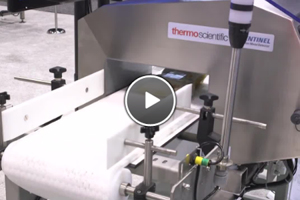METAL CONTAMINATION WHITE PAPERS & ARTICLES
-
What Food Processors Should Know: Metal Detection Vs. X-ray Inspection
Consumer safety has always been a primary concern for food processors. HACCP (Hazard Analysis and Critical Control Points) has been a methology recommended by the FDA since the 1950s and food producers have always been conscious of their brand’s protection. The recent enactment of the U.S. Food Safety Modernization Act (FSMA) has turned the intensity up even higher.
-
Ensuring Food Safety Through The Prevention Of Physical Contamination
Incidents of physical contaminants in food can have a detrimental impact on brand reputation. This white paper explains different types of physical contamination in food and how to prevent them.
-
Equipment Safety For Product Inspection Equipment
This paper is intended as a general guide on equipment safety, for users and suppliers of product inspection equipment. It should be thought of as a framework for discussion on the topic, assisting both users and suppliers in meeting their shared responsibility for equipment safety.
-
Metal Detection, X-Ray Inspection Or Both?
We review the pros and cons of metal detection and x-ray inspection to help you decide which inspection technology to invest in to ensure the quality and safety of your products.
-
How To Maximize The Performance Of Your Metal Detector
To get the most out of your metal detection program, it’s important to understand the factors that affect metal detector sensitivity and the ability to find different types of metal. This guide explains the various elements.
-
How To Guarantee All-Round Glass Inspection
Glass is often the preferred packaging material for food manufacturers. However, checking for foreign bodies in a finished pack is critical, as just one glass shard can have catastrophic consequences.
METAL CONTAMINATION NEWS
-
Pipeline Metal Detector Ensures Metal-Free Vacuum Filler Applications For Food Manufacturers7/25/2017
Mettler-Toledo Safeline’s new range of HDS Pipeline Metal Detectors is developed specifically for use on vacuum filling lines for detection sensitivity and stability, as well as user-friendly operation in potentially harsh or extreme working environments.
- Eagle To Hatch Advanced Product Safety At PACK EXPO
- Key Technology Introduces Sanitary Rotary Finish On Vibratory Conveyors
- Eagle To Land At Interpack 2014 With Enhanced X-Ray And Fat Analysis Innovations
- Obtain Guidance On Metal Detection's Role In Food Safety
- MPE Pro-Tector Offers Total Inline Solution For Metal Control














